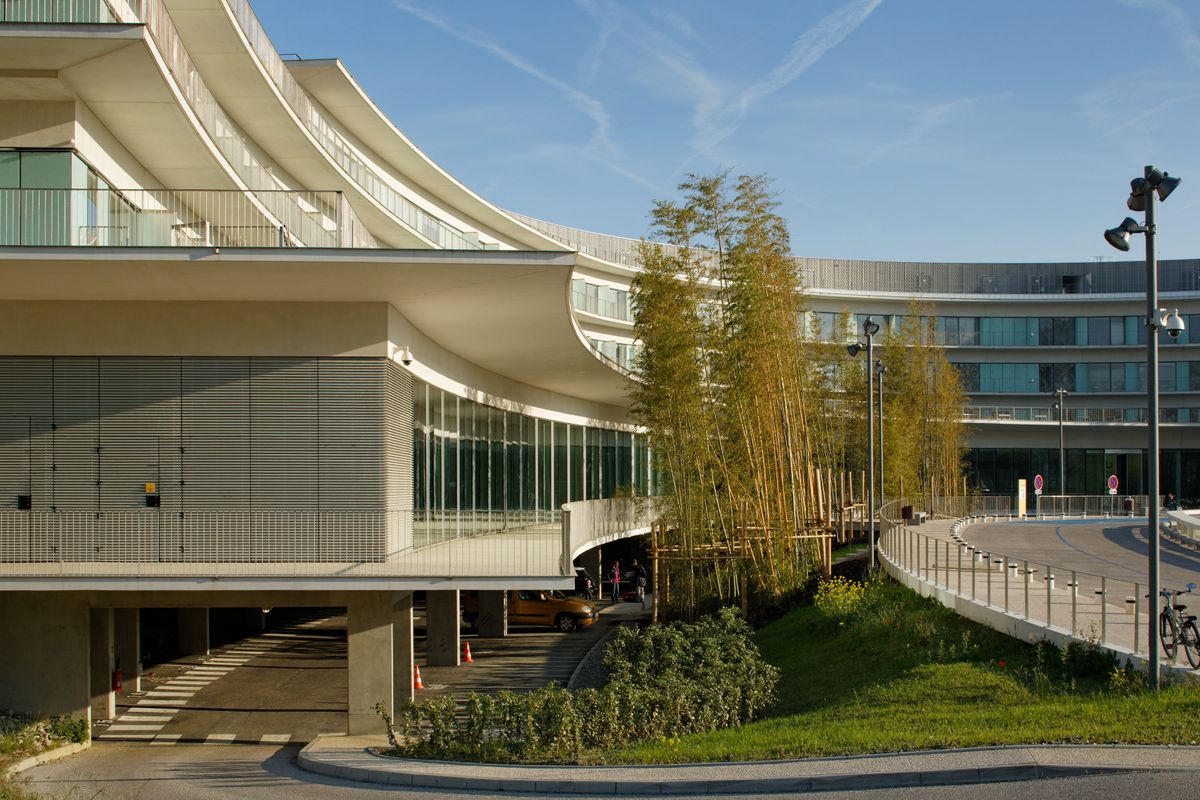
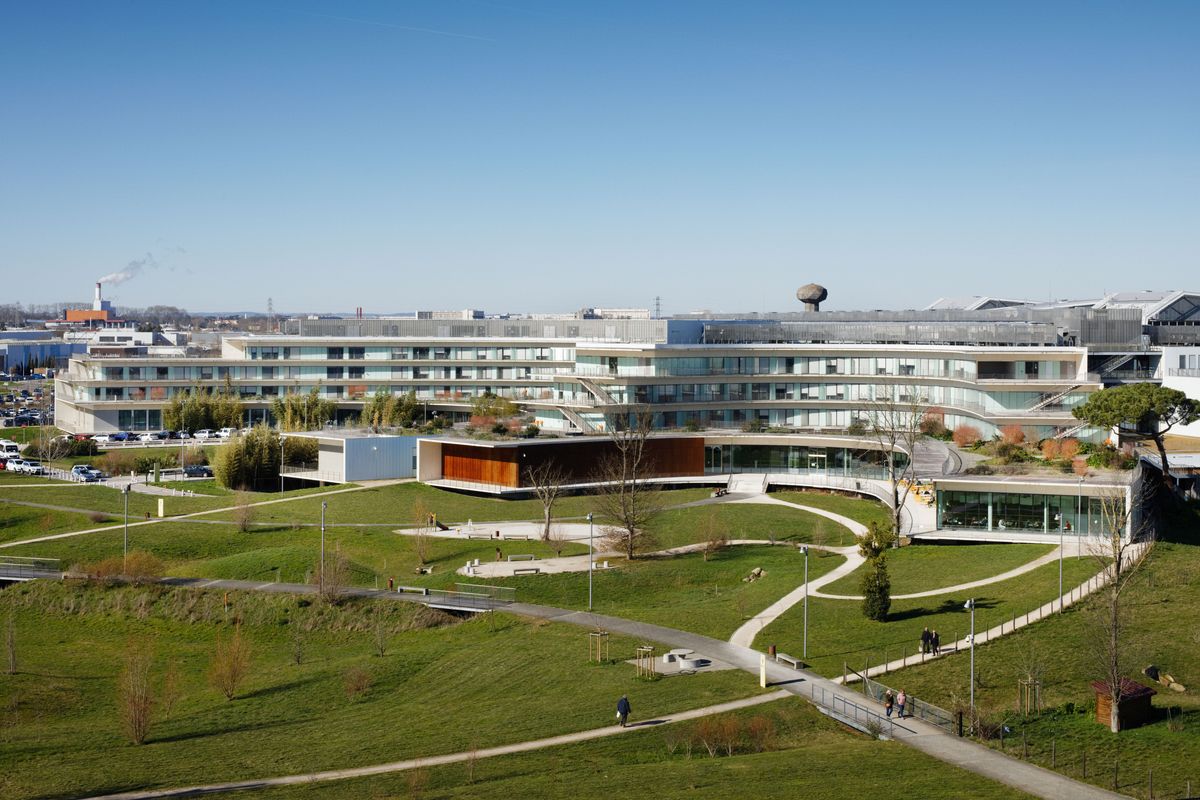
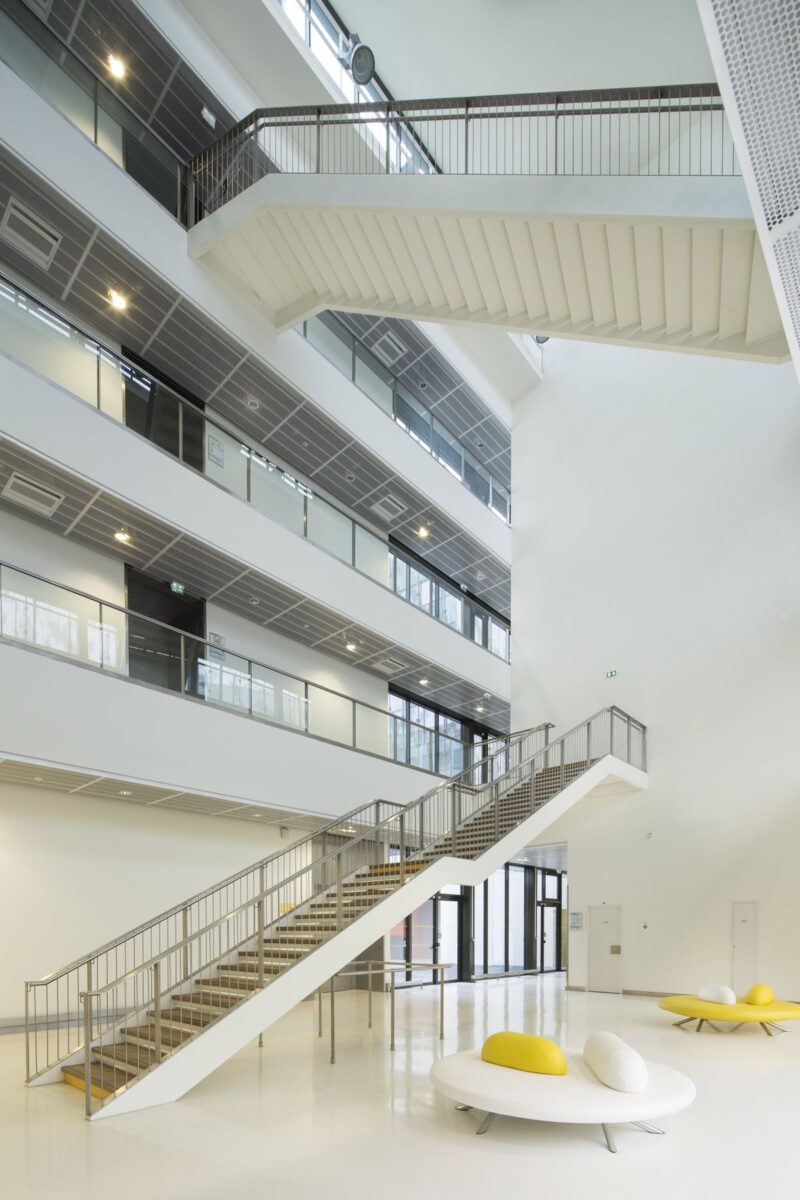
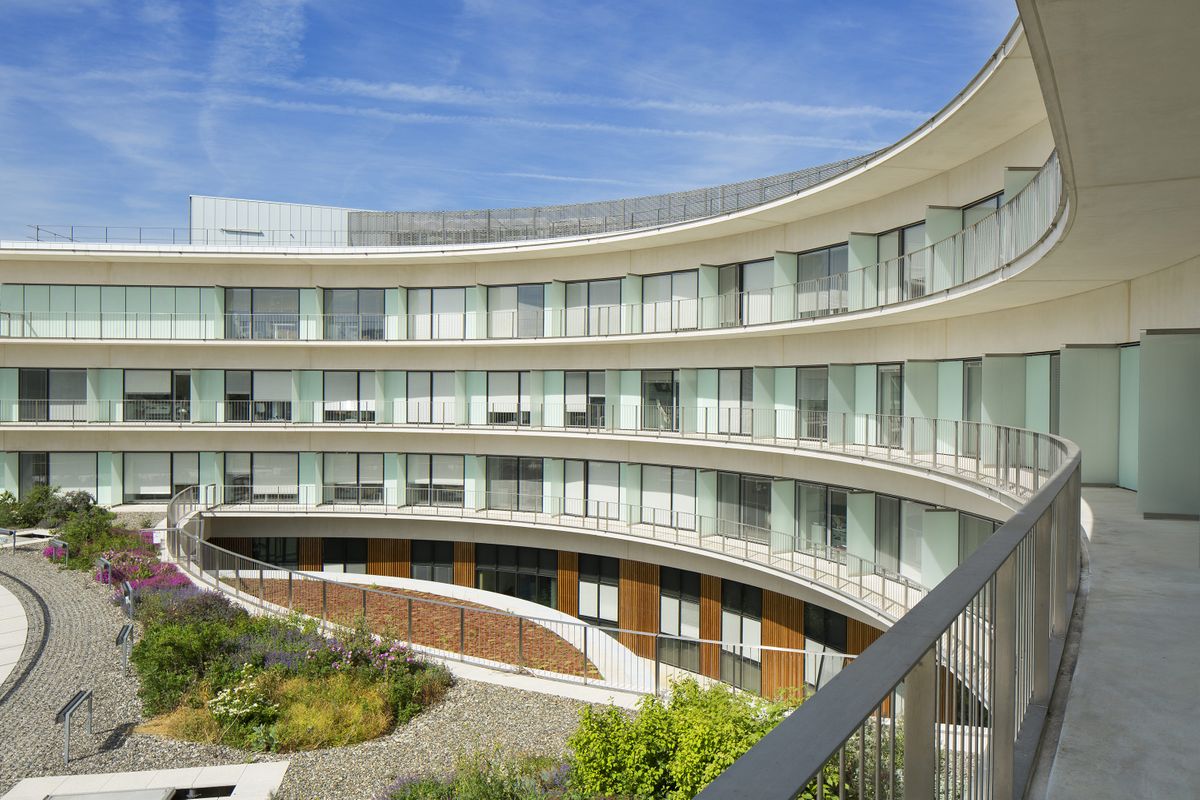
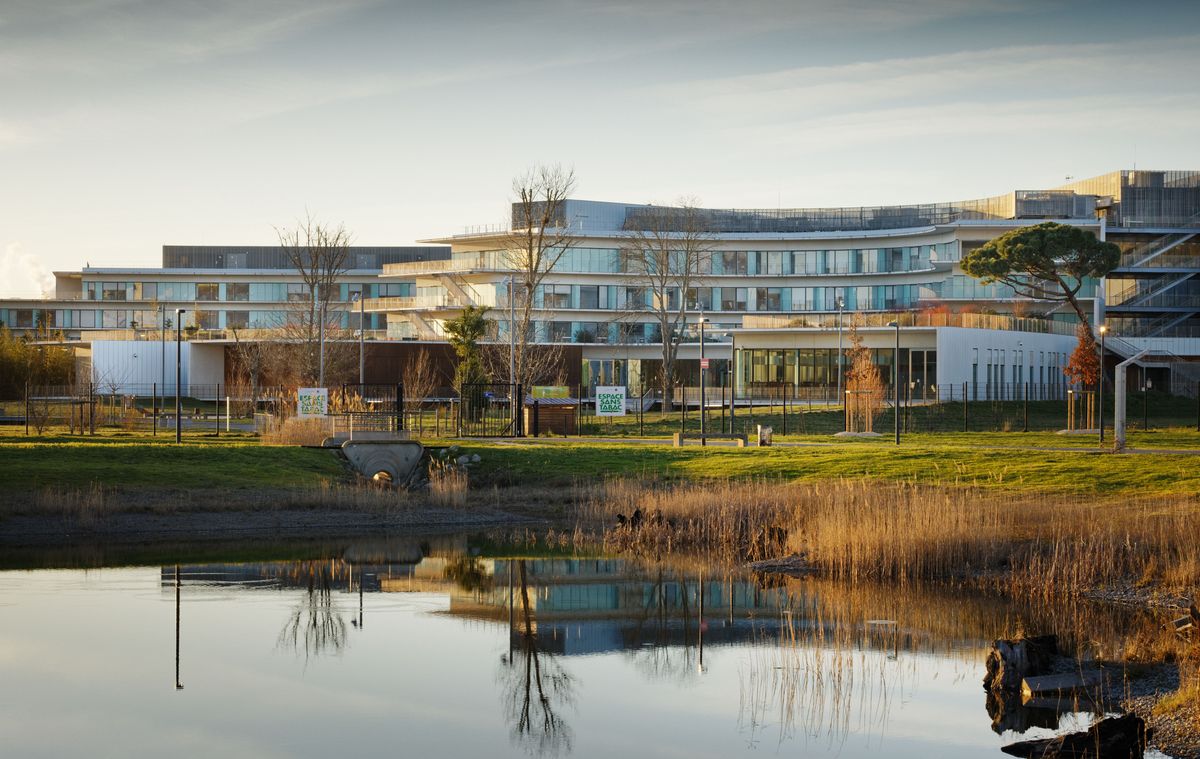





The site comprises several projects to the north on the former AZF site and on the south other architectural structures on what used to be the former military site of Braqueville. The urban plan is based on the concept of a “landscaped scientific campus”. The aim is to produce a “coherent project” which despite being home to a diverse range of elements will be a united space.
The campus is mainly comprised of woodland with several clearings for the various components of the project. The campus will also include a public urban park of about 40 ha and a private ‘green zone’ along the Garonne river.
Coherence will primarily derive from the use of public spaces of all kinds (woodland, etc.) to create a shared setting ensuring the project is viewed as a “whole”. In other words immediately recognizable as a scientific campus with a unique image.
Shared services and facilities will also contribute to this objective. The positioning and architecture of these elements must, therefore, be especially well defined in order to encourage the shared activity and the essence of community.
The Cancer University Institute adds a particular dimension to the Oncopole site: together with the public research laboratories, the private laboratories and all the other services and spaces of the Oncopole, the institute is the final piece in the cycle beginning with medical research and finishing with patient treatment. Thus, this institute provides a link between medical staff, patients, their families, and the public. Its design is in line with the spirit of the Canceropole. The institute’s first architectural principle is that it is conceived as a site and not only as a building: equal importance is attached to the landscape and to buildings.
Architecture and landscape are the conceptual foundations of this clinic and the harmony between them creates ideal conditions for the treatment of cancer. This principle guides the institute’s design itself, its forms and materials. It establishes an optimal relationship between patients and medical staff.
As for the Maison Commune, the common house, the aim was to bring people back together within the Langlade site. This part of the project is the symbol of individual and social interaction. This facility open to all offers wide a range of services for patients, their relatives and friends, and the medical staff. Several associations and an athletic center have already settled on the site.
Associate architects
Cardete Huet Associés (IUCT-o)
Engineering firms and suppliers
IUCT-o: Snc Lavalin (All trades), Mazet & Associés (Economist), Veritas (Control authority)
Maison commune: Betem (Engineering firms), Eco+ (Economist), Gamba acoustique (Acoustics), Ingecor (Kitchen), Qualiconsult (Control authority)
Zone accueil nord: Betem (Engineering firms), Eco + (Economist)
Partners/Leading architects
Yann Padlewski
Michele Circella
Benjamin Doré
Lead architects
Mehdi Jaoua
Bertrand Mercier
Project team
Julie Alazard
Laure Barthelot
Stéphanie Boufflet
Adriana Buhaj
Pierre Chastel
Nicolas Dinjeart
Aurelia Djukanovic
Christine Anne Joubert
Zulema Tanco Lopez
Gaëlle Mazé
Francesca Mazzone
Marie-Hélène Paoli
Nora Sieffert
Charlotte Wrigglesworth
Landscape design
Pierre-Henri Cazes
Arnaud Mermet-Gerlat